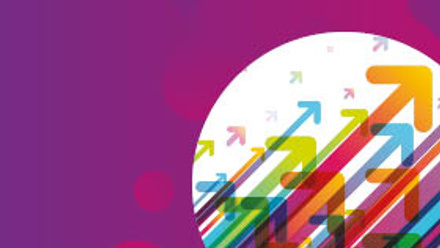Revolution in the head: why we need to rethink reward communications
But at the risk of crossing my own red line, we’ve lived through an unbelievable digital revolution which is apocalyptic in terms of its impact on the way we communicate.

Between the birth of my son in January 2000 and now, the world changed. When he was born I took 36 photos, developed the film at the chemist, and posted the photos to my close friends and family. My dial up modem would have exploded if I’d scanned them. In contrast, yesterday I stayed in a hotel and took a photo of my dinner (forgive me) and shared it instantly with an online community of friends, none of whom I’ve ever met in person, who come from exotic places like Queensland, Singapore, Moscow, Pakistan, Iran, Jordan, Holland, New Jersey, Texas, California, Ottowa and Manchester. They agreed that English food looked nice, and then tried to outdo me by sharing a variety of global cuisine most of which I’d never heard of but most of which looked great (although I’m less sure about the Jordanian skewered goat).
Technology now allows us to share content very easily, and technology also provides us with a platform that enables us to meet other people from across the globe. My son’s children won’t even consider this is strange – they will happily go for a virtual jog with friends from across the world who have set the same goal for a 5k run. In fact, that’s already happening now.
But those are the changes we experience – they are quite obvious. The real revolution is happening behind the scenes, in two places - one is in the data trail that we leave behind. And the other is in our heads. And that means we need to rethink how we approach communication if we are to be effective.
Data in the driving seat
In terms of data, the systems that support modern communication channels are extremely sophisticated. Not only can they tell whether I’m falling in love or falling out of love based on my interactions with other people, they can also deliver me content which I am more likely to find interesting based on what I actually do, not what I say I do. And they can change that content in real time based on how successful that content was with people who are like me. Content has always been king – but data drives what content is produced, what content looks like and what I see. We aren’t quite at the stage of seeing different TV adverts when we tune into Coronation Street, but we aren’t very far away from it either.
Change of mind
And what did I mean by the revolution in the head? It’s about expectations. Without making a conscious decision, we have formed new habits around the way we consume content that faster-moving industries have been leveraging. Our tolerance for long content is waning. We expect pictures. We expect them to move. We expect to be entertained or to find it personally useful for us. We expect to be able to share content we like with people who will like it back. We are beginning to expect that content to be relevant to us in some way. And we want it on our phone. In other words, the world is used to digital content and mobile channels. I already cannot imagine posting photos to people, other than in a sense of the word ‘post’ that didn’t exist less than a generation ago.
So how does it help us communicate better? We don’t have sophisticated algorithmic communications engines which can serve content instantaneously, and we don’t have the ability to generate enough content to keep people interested.
But you probably do.
In the workplace
You probably already have a benefits platform that allows you to segment your benefits to different parts of your organisation. So why are you giving them the same communications? You know a great deal about the people who work for you, so why not use that to build a targeted communication campaign? If you don’t have capability to deliver content specifically to a group, why not target the content to different segments so that it works in different ways for different people? And, in terms of content, why do you think it’s up to you to build it? Facebook, Instagram, YouTube and hundreds of other sites produce no content. They just let people talk to each other – and that’s an option you can consider too. If it increases engagement, it’s an option to consider. This could work.
Communications outside of work have had a revolution. It’s time workplace communications caught up.
The author is David Millar, Director - Communications at JLT Employee Benefits.
This article is provided by JLT Employee Benefits.
In partnership with






